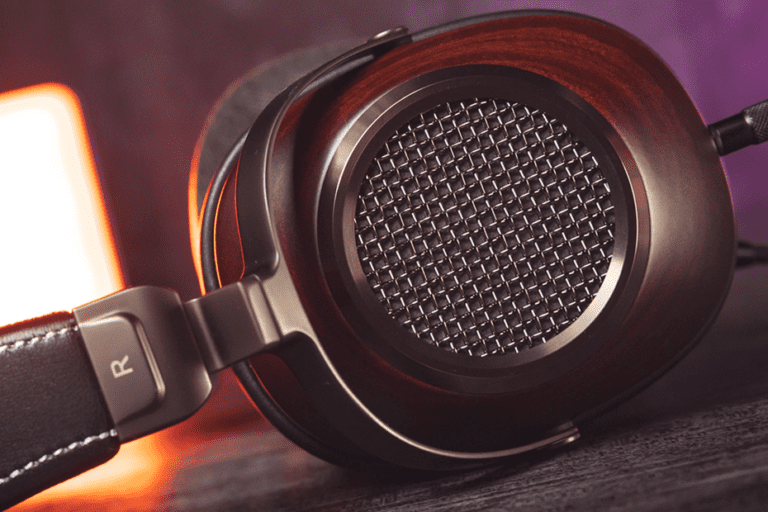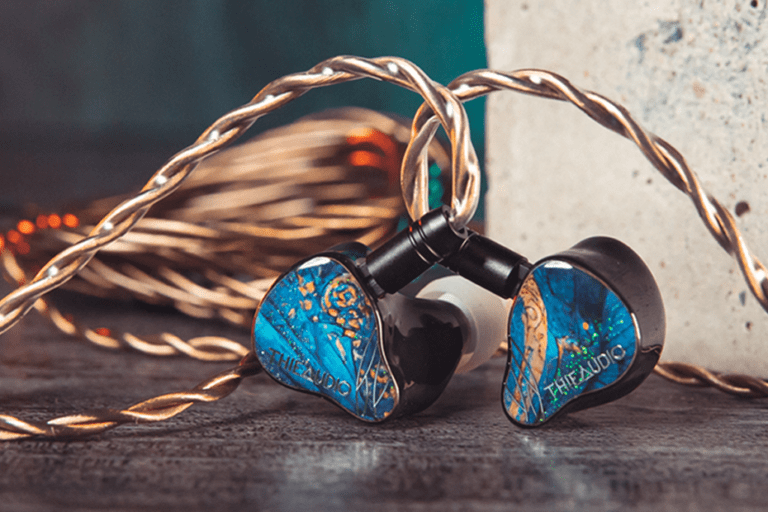In a world filled with options, this little device stands out as exceptionally capable. Today, we will be looking at iFi GO Link portable DAC/AMP.
I would like to thank iFi Audio for providing the sample for this review. As always I am not paid to make this review. I don’t offer any specific opinions about this product, and all thoughts expressed in this review are my own.
GO link is based on the ESS ES9219MQ DAC chip and has a 3.5mm output. The dongle supports PCM decoding up to 384khz at 32 bits and also supports DSD256, DXD 384 and MQA. Go Link arrived in a small long package. On the front of the package there is an illustration of the dongle. The list of technical specifications is on the back of the package.
Inside the box:
- iFi Go Link DAC/AMP
- USB-C to USB-A adapter
- USB-C to Lightning adapter
- Warranty card
- Manual
- and a sticker
iFi did a great job including all these adapters so now most of the platforms are covered.. I had some experience with iFi products in the past, though I never reviewed any product on my channel. This is my first iFi review and I’m quite excited. The iFi products stand out with their features, design & build and Go Link is no exception.
Design & build
The body of the DAC is made from magnesium alloy and it feels solid. Plus, its matte finish not only looks good but also resists fingerprints. The length of the dongle without the cable is 48 mm. The width is 12.6mm and the height is 7.6 mm. The magnesium alloy casing gives iFi Go Link sturdiness and the ability to shield the device from external electromagnetic interference.
On one edge there is a 3.5 mm gold-plated connector and on the other end, there is a cable attached. By the way, the 3.5 mm connector here uses a so-called S-Balanced technology that reduces the channel cross-talk. The cable is non-removable which can be a deal breaker for some. But I think the fewer connection points the better. The length of the permanently attached cable is 100 mm which should be enough for most scenarios. The cable itself is braided and quite thick, so I don’t expect any surprises in this section.
On the top of iFi Go Link there is a Hi-Res sticker, an MQA inscription, and an LED indicator. The LED changes the color according to the file format. Green is PCM 44.1 Khz to 96Khz. Yellow for PCM 176 to 384Khz. Cyan for DSD 64/128. Blue for DSD 256 and Magenta for MQA. I’m a big fan of color indication, so this approach resonates with me. Overall, I’m pleased with the build, product design, and choice of materials.
Technical specifications
Talking about technical specs, THD+N (@1kHz) (A-WT): is less than 0.004%, SNR: 125 dB (A-WT), and Dynamic Range: 122 db. The maximum output power is 70 mW @ 32 Ohms and it’s not very impressive, especially looking at the competition. But what makes this tiny device stand out in this price range is its sound signature.
I was mainly testing iFi Go Link with my old and trusty Samsung Galaxy S10 that runs on Android 12. I used FLAC and DSD files with USB Audio Player PRO and Apple Music for lossless streaming. Setting up the Go-Link was a breeze. You just plug it in, connect your headphones, and you’re ready to go.
After the initial product launch, iFi released additional firmware updates for the GO-link. At the time of making this review, there are already 3 versions available for download – 1.66, 1.69, and 1.80. The sample in this review was shipped with version 1.80. If your unit is shipped with an earlier version, you can always update it.
When you disconnect the headphones from Go Link don’t pause or stop playing music. This means it doesn’t send a headphone connection status to the smartphone. And this is the only downside during the operation I have noticed.
Lately, I’m seeing the lack of such functionality with many dongles, so maybe this functionality was dropped at some point.
iFi Go Link pairings & sound impressions
Talking about power, Go-Link supplies up to 70 mW of power at 32Ω. While it’s not the most powerful dongle out there in its class, the performance is still impressive. Especially taking into consideration its power efficiency. With most of my IEMs, I rarely increased the volume past 70%. The only exception was maybe Letshuoer S12 PRO which is more power-demanding. This means iFi Go Link is able to drive most of the IEMs on the market today. At the same time, I didn’t notice any audible noise with sensitive IEMs which is good. And this is exactly what you should expect from a quality DAC/AMP.
The next important aspect for me was how it would drive my full-size headphones. I had no expectations for it to drive demanding headphones. But I still tried it with Sennheiser HD 6XX and HIFIMAN Ananda Nano. And that’s where I came across a very interesting discovery. On paper GO Link doesn’t have enough power to drive such headphones. But surprisingly it made my 6XX sound even smoother and silky than it originally was.
Enjoying this review? Read more DAC/AMP reviews here
I then switched to Ananda Nano to confirm my guess. It sounded so organic that I did not believe my ears at first. Nano tends to be on the analytical side, but with Go Link, it sounded more rounded and lush.
I don’t believe that DACs can have a significant impact on the sound. But the amplifier section of the DAC can still introduce some changes to the sound. And the amplifier section of Go Link is pure magic to me. The sound is musical, lush, warm, and quite resolving at the same time.
With 6XX and Ananda Nano, I had to crank the volume up to 90% to reach preferred levels of volume. And while 70 mW is not enough to drive either of these pairs, I was pleasantly surprised with the synergy. Go-Link will be an ideal companion for the headphones and IEMs in the 16-150 Ohm range. And it it will pair exceptionally well with bright and neutral-bright headphones. To me, the Go-Link strikes the perfect balance between price and performance. And in addition, it has iFi’s in-house warm sound character. Considering what it brings to the table, it’s a great portable DAC/AMP and I think iFi did a good job!
Pros
- Good design & build
- iFi in-house sound signature
- MQA rendering (if you still care about it in 2023)
- S-Balanced 3.5mm connection
- Dongle comes with both USB-A and Lightning adapters
- Enough power to drive a lot of IEMs and efficient full-size headphones
- Suitable for sensitive IEMs
- and the dongle has a musical and warm sound signature.
Cons
- Non-removable cable
- The dongle does not have a stop/pause feature when you disconnect the headphones
- and USB-C to lightning adapter is bulky.
When iFi released the Go-Link, they entered a very saturated market of accessible dongle DACs and amps. But they did it their own way. That’s why Go-Link should be on your list if you need a well-sounding DAC/AMP with a musical & lush sound signature.
I hope this review has been helpful. If you’d like to see more content like this, consider subscribing to my YouTube channel for future updates. Thank you for joining me, and until next time, goodbye!
** As an Amazon Associate I earn from qualifying purchases. Some of the links in my reviews are affiliate links. At no extra cost to you, I will make a small commission if you click and make a qualifying purchase.


